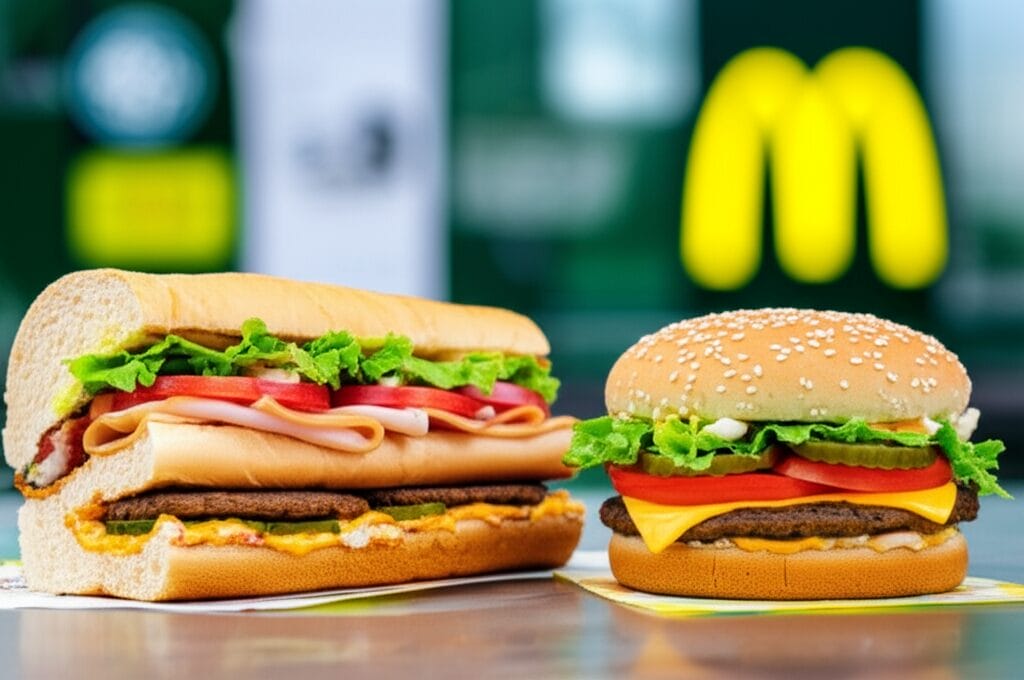When it comes to the global fast food scene, few debates spark as much curiosity as the comparison between Subway vs McDonald’s size. Both are among the most widespread food chains worldwide, but how do they truly stack up against one another in terms of presence, scale, and reach? This global fast food comparison offers a fascinating look at two of the world’s biggest restaurant chain rankings, shedding light on what makes these fast food giants so formidable.
Subway vs McDonald’s Size: Numbers That Tell the Story

Subway once held the title for the largest number of outlets worldwide. With thousands of locations spread across over 100 countries, Subway’s model of offering made-to-order sandwiches appealed to a broad demographic seeking a seemingly healthier fast food option. Its presence is often found in diverse venues—from shopping malls and airports to high streets and office blocks.
McDonald’s, on the other hand, is iconic for its golden arches and classic burger menu. Although it operates fewer outlets than Subway, McDonald’s consistently generates higher sales per location and boasts some of the most recognisable branding in the fast food industry. As of recent data, McDonald’s operates in over 120 countries with a strong global footprint and maintains a solid position near the top of restaurant chain rankings.
Global Fast Food Comparison: Beyond Just Numbers
Looking beyond the raw number of outlets, there are other factors that influence the Subway vs McDonald’s size debate. For instance, McDonald’s restaurants tend to be larger in physical size, often featuring seating areas designed for families and groups, with some larger stores also including play zones or McCafés. Subway outlets, by contrast, are generally smaller, focusing on quick service and takeaway, which allows them to fit into smaller spaces.
Another significant aspect is menu variety and customer experience. McDonald’s has evolved its menu over the years to include items catering to local tastes—like McSpicy Paneer in India or the Teriyaki Burger in Japan—which has helped the brand penetrate and retain markets worldwide. Subway stores, however, typically stick to their sandwich-centric menu with occasional regional specials, which, while consistent, may limit their appeal in certain areas.
The Impact of Franchise Models on Size and Reach
Both Subway and McDonald’s use franchising to expand their global footprints, but their approaches differ, affecting their overall size and presence. Subway’s franchise model is known for its relatively low entry cost and simpler operations, making it attractive for small business owners. This has contributed to the rapid growth of its outlets globally, especially in smaller cities and non-traditional locations.
McDonald’s franchises require a higher investment and adherence to more stringent operational standards, which might slow the pace of new openings. Still, the upside lies in brand consistency and quality control, which keeps customer loyalty strong. This difference in franchising models partly explains why Subway once surpassed McDonald’s in outlet numbers but not necessarily in sales or brand recognition.
Fast Food Giants: Who Leads in Sales and Popularity?
While Subway has more locations, McDonald’s dominates in terms of annual revenue and brand presence. McDonald’s reported revenues are significantly higher, driven by its larger footprint in the fast food market and a broader menu appeal. It consistently ranks at the top in restaurant chain rankings by sales volume, brand value, and market penetration.
Popularity-wise, McDonald’s benefits from decades of aggressive marketing, sponsorships, and family-friendly initiatives, making it a household name across generations. Subway, though trusted and well-liked for its healthy options, has struggled in recent years to maintain its growth trajectory, facing pressure from new competitors and changing consumer preferences.
Trends Affecting Subway vs McDonald’s Size
Fast food giants constantly adapt to shifting consumer demands to remain relevant. Both Subway and McDonald’s are now investing in digital innovations like mobile ordering, delivery partnerships, and loyalty programs. However, how these efforts impact their size and footprint might differ.
McDonald’s has been more proactive in remodelling outlets to create a modern, appealing atmosphere and investing in menu innovation to target health-conscious consumers without abandoning their comfort food base. Subway, meanwhile, is working on refreshing its stores and menu to attract a broader demographic but hasn’t yet fully reversed its slowdown in new store growth.
Final Thoughts on the Global Fast Food Comparison
In the end, the Subway vs McDonald’s size comparison highlights key differences in their global strategies, customer experiences, and brand strengths. While Subway boasts the edge in sheer number of outlets, McDonald’s leads in brand power, sales, and overall market influence.
For consumers and industry watchers alike, this battle between the two fast food giants paints a clear picture of how vast and competitive the international fast food market is. It’s a reminder that size is just one part of the story—and how these companies continue to evolve will determine their place in restaurant chain rankings for years to come.


Leave a Reply